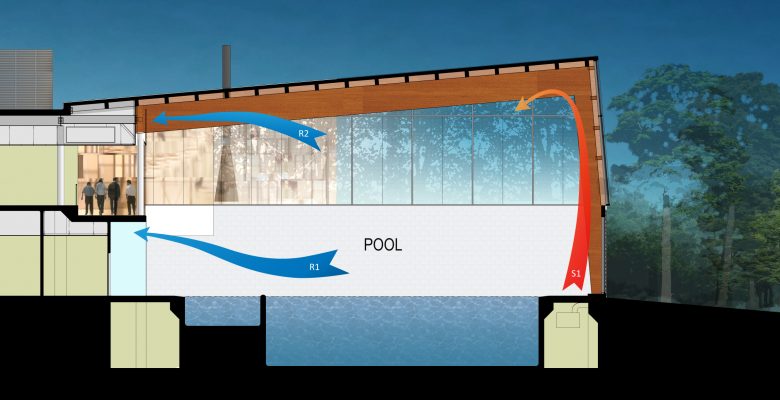The natatorium environment is one of the most challenging environments to design and build in northern climates. This is due to the large swings in levels of humidity and temperature between interior and exterior conditions. The challenge remains how to balance the interior pool environment, requiring a consistent temperature and humidity level with the exterior; while taking into account the atmospheric by-products of chlorination. This article reviews the predominant elements present within the pool environment. It discusses elements that cover a broad range of pool related design issues and explores considerations to be aware of when designing a natatorium and its interfaces. The discussion will first define the basic elements within the pool environment that must be understood, air temperature and humidity, air quality and movement and air pressure. The remainder of the article will cover a broad range of pool-related design issues and explore considerations to be aware of when designing a natatorium and its interfaces. Some of the factors that should be considered during the design phase of a project include the functionality of the mechanical system, the ratio of solid to void in the exterior skin, massing of the pool volume, curtain wall and glazing, finishing materials (interior and exterior) and their durability and control of the vapour migration and roof and ceiling finishes. All will have an impact on decision making. The intention of all decisions is to create an enduring enclosure that provides comfort and recreation to its patrons.
This article originally appeared in Vol 02.02 of the Perkins+Will Research Journal. CLICK HERE to see the whole article.

